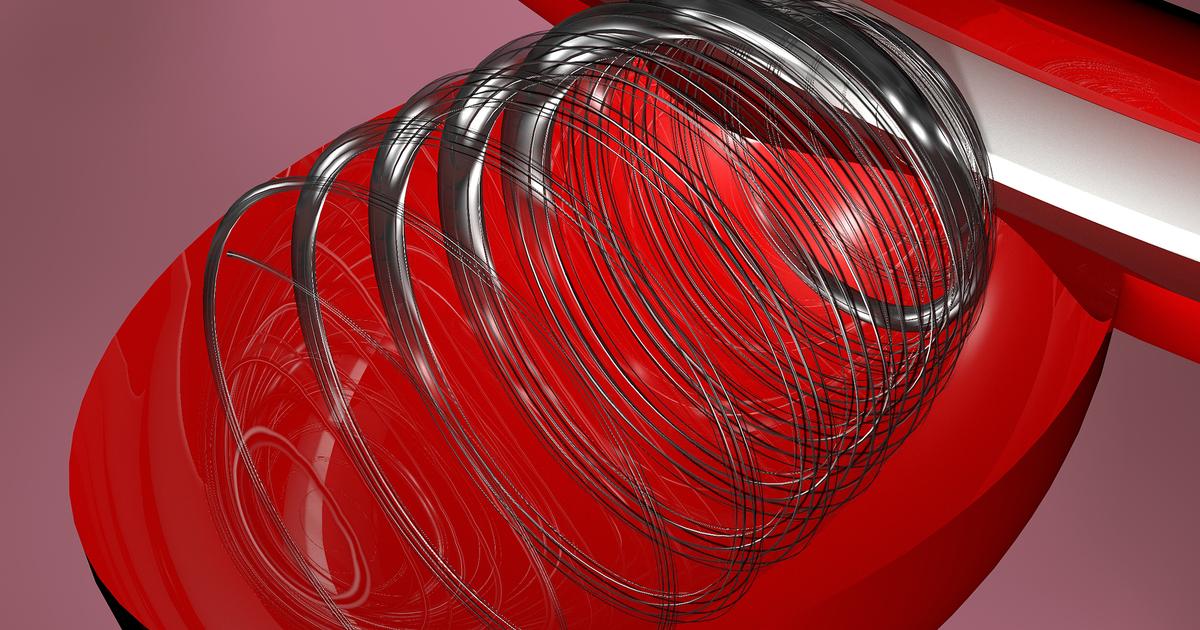How To Treat A Brain Aneurysm
A brain aneurysm is a ballooning or bulge that occurs in a blood vessel within the brain. Many aneurysms look like berries hanging on stems. Aneurysms can exist without symptoms, but getting screened for them can be life-saving. If a brain aneurysm ruptures or leaks, there will be bleeding in the patient's brain. Ruptured aneurysms most commonly occur in the area between the tissues covering the brain and the brain itself. This is called a subarachnoid hemorrhage. A ruptured aneurysm is a life-threatening condition that requires emergency treatment. With that said, the majority of aneurysms don't rupture. These don't tend to cause symptoms, and they're often found when a patient is screened for another condition. Some brain aneurysms can be treated before they rupture.
Get the full details on common treatments for brain aneurysms now.
Endovascular Coiling

Endovascular coiling is a type of minimally invasive procedure that doesn't require any incision to be made in the skull. The goal is to block the flow of blood into an aneurysm. Endovascular coiling procedures have been successfully completed since 1991. During the procedure, a catheter will be passed through the patient's groin and into the artery that contains the aneurysm. When the catheter is in position, coils of platinum are released, causing the aneurysm to clot, which prevents further blood from entering it. After the surgery, patients typically spend one night in the hospital to recover and make sure the surgery didn't have any complications. They can then return home and usually return to their normal activity level within about two days. Coiling procedures are usually used for brain aneurysms that haven't yet ruptured. There are some cases where coiling can be used to treat a ruptured brain aneurysm, but this is typically only when the patients cannot have invasive surgery or are older.
Read more about how to treat a brain aneurysm now.
Surgical Clipping

Surgical clipping is a surgical procedure that treats an aneurysm, though it's more invasive than coiling. The goal of the surgery is to keep blood from circulating into the aneurysm without impeding circulation through normal blood vessels. The patient is given general anesthesia, and an incision is made in their skull. The surgeon will place a small clip along the base of the aneurysm, which blocks further blood from entering it. Each clip is made out of titanium and permanently stays on the artery. Ruptured aneurysms can be treated with surgical clipping. There is a risk of bleeding that's heightened thirty-five percent within the first fourteen days following the initial bleed. It's best to perform the surgery within seventy-two hours following the first bleed to avoid more life-threatening bleeding. Unruptured aneurysms can also be treated with clipping. If the aneurysm ruptures, there's a forty percent risk of death and eighty percent risk of disability. Doctors can talk about their patient's surgical options and whether surgery for their aneurysm is a good idea.
Uncover more information on treating a brain aneurysm effectively now.
Flow Diverters

Flow diverters, tubular implants that divert blood flow away from the aneurysm, are a newer treatment option. This stops blood from moving inside the aneurysm, which then encourages the body to heal the problem. The body can then reconstruct the artery with the aneurysm. A doctor may recommend using flow diverters if their patient has a large aneurysm that can't be treated using other procedures. Typically, the surgery recommendation will be made by a neurosurgeon as they work in conjunction with neurologists. The most common aneurysms flow diverters are used for are unruptured saccular aneurysms with wide necks. These are hard to coil since the coils can fill the artery, and they're difficult to clip because of the wider opening. Circumferential and fusiform shape aneurysms can also be treated with flow diverters. Before flow diverters were invented, there wasn't any treatment option available for many types of intracranial aneurysms. Researchers use a flow diverter grading system to determine how effective the treatment is. After patients receive a flow diverter, the degree of their aneurysm is subsequently measured on a five-point scale. The highest grade is four, which indicates the aneurysm has been completely obliterated.
Continue reading to learn mow about how to treat a brain aneurysm now.
Catheter Or Shunt Surgery

A catheter or shunt surgery can be performed to lessen pressure in the brain that occurs following a ruptured aneurysm. Rather than treating the aneurysm itself, this type of surgery helps drain excess cerebrospinal fluid. During the surgery, the neurosurgeon may place a catheter into the fluid-filled spaces that surround the brain or are inside the brain and spinal cord. This allows the excess fluid to be drained into a bag. In some cases, a shunt system needs to be introduced afterward. This system is made up of a valve and a flexible tube made with silicone and rubber. The goal of the shunt is to create a channel for drainage that begins in the brain and ends in the abdomen, which helps keep fluid from continuing to accumulate following the surgery. The positioning of the catheters will vary depending on the area filled with fluid. Patients may need either lumbar or ventricular draining catheters.
Learn more about treating brain aneurysms now.
Calcium Channel Blockers

Calcium channel blockers can treat multiple conditions. These medications keep calcium from moving into the cells that make up the walls of the blood vessels. When an aneurysm ruptures, one potential complication is the blood vessels randomly narrow, though calcium channel blockers help lessen this effect. Nimodipine is a calcium channel blocker that has reduced the risk of suffering a delayed brain injury after an aneurysm ruptures. Some patients experience a brain injury because there's not sufficient blood flow throughout the brain after they have a subarachnoid hemorrhage. A calcium channel blocker works by widening and relaxing blood vessels. Some blockers slow down an individual's heart rate, which can help reduce high blood pressure and control issues caused by an irregular heartbeat. Some blockers come in both short-acting and long-acting forms. A long-acting medication releases slowly over time, while a short-acting medication works quickly but wears off quickly as well.